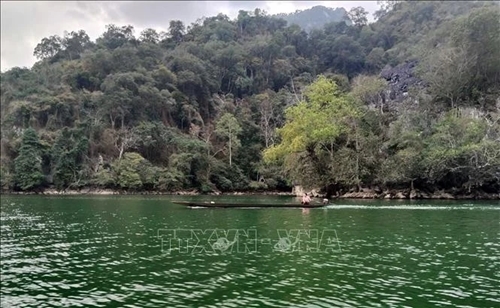The national park, boasting distinctive limestone mountains, breathtaking landscapes, and rich biodiversity, gained international recognition in 1995, when the World Lake Conference in the U.S. classified it as one of the world’s 20 special freshwater lakes in need of protection.
    |
 |
|
The pristine landscape by the side of Ba Be Lake, part of the Ba Be National Park |
Its prestigious status was elevated as the ASEAN Center for Biodiversity designated it as an ASEAN Heritage Park in December 2003. The park continued to gather accolades, being recognized as a wetland of international importance by the Ramsar Convention on Wetlands Secretariat in 2011, followed by its designation as a special national heritage site by the Prime Minister in September 2012.
Bestowed with year-round mild climate, pristine ecological landscape, and distinctive ethnic minority cultures, the destination holds huge potential for ecological tourism, wellness retreats, educational visits, cultural exploration, and adventure tourism.
Despite attracting tens of thousands of visitors annually for tourism and research, the park faces challenges in capitalizing on its ecotourism potential, including limited investment, insufficient comprehensive assessments, and inadequate tourism management expertise.
Against this backdrop, the Bac Kan provincial People’s Committee approved a masterplan for ecological, recreational, and leisure tourism development at the park for the 2021-2030 period. It eyes to attract 150,000 visitors annually, with international tourists accounting for 10%, while creating some 800 permanent jobs this year.
By 2030, the province hopes to secure eight forest environment lease investment projects and welcome 450,000 visitors each year, 20% of which will be international tourists. The initiative aims to encourage tourists' stays exceeding three days, generate around 2,000 permanent jobs, and maintain strict environmental protection and nature conservation standards.
The plan encompasses the park's entire 10,048-hectare area, spanning seven communes across the Ba Be and Cho Don districts. It will serve as a foundation for managing tourism activities, facilitating investment projects, and establishing mechanisms for sharing ecotourism benefits with local communities. The plan is expected to help introduce the park's biodiversity, ecological environment, indigenous culture, and historical significance to visitors.
Source: VNA